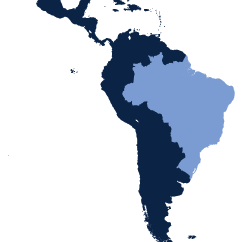Primary Functions
- Learn why companies should address water-related risks of climate change and present case studies of actions being taken to better integrate corporate efforts on climate change and water.
- Understand why more action is urgently needed by businesses, the existing barriers to action, and proposed solutions to address those barriers.
Detailed Description
Climate change poses one of the most serious threats to societies, economies and environments across the globe. The business community is already experiencing adverse physical effects of climate change, from increased operational costs and disrupted production to social unrest in communities in which companies operate. These climate impacts are most prominently expressed through changes in the water cycle. “If climate change is the shark, water is its teeth” is an analogy quoted with increasing frequency in business conference circuits. According to data reported to CDP, changes in precipitation and extreme drought were the most common physical risks of climate change.
A growing number of companies recognize the imperative to manage the risks of climate change. To build resilience to a changing climate and thrive into the future, companies will need to adequately consider, mitigate and adapt to the water-related risks of climate change to their core operations, surrounding communities, supply chain and broader networks.
- Highlight the link between physical risks of climate change and impacts on business.
- Present the case for more urgent action from business to manage water-related risks of climate change.
- Demystify common barriers and present illustrative solutions to private sector action on climate change.
- Present leading examples of companies better integrating their efforts on climate change and water and collaborating with strategic partners to have positive impact.
This paper summarizes existing literature assessing the physical risks of climate change to the private sector and examples of how the private sector can address these risks and build their water resilience. The reader should expect to understand why more action is urgently needed by businesses, the existing barriers to action, and proposed solutions to address those barriers. The partner organizations have worked with companies to understand the physical risks of climate change and how to address those risks. In documenting what’s been done to date we aim to raise awareness and enable more companies to build their water resilience.





